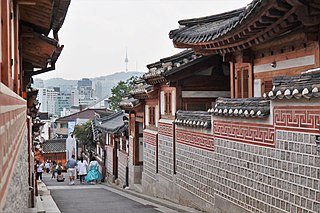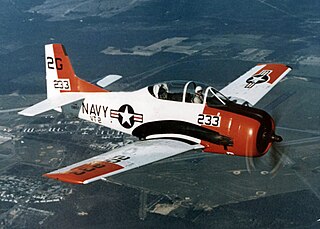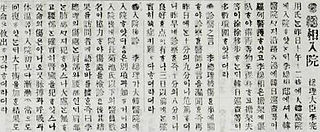76 Sights in Seoul, South Korea (with Map and Images)
Legend
Premium Sights
Book tickets, guided tours and activities in Seoul.
Guided Free Walking Tours
Book free guided walking tours in Seoul.
Welcome to your journey through the most beautiful sights in Seoul, South Korea! Whether you want to discover the city's historical treasures or experience its modern highlights, you'll find everything your heart desires here. Be inspired by our selection and plan your unforgettable adventure in Seoul. Dive into the diversity of this fascinating city and discover everything it has to offer.
Sightseeing Tours in SeoulActivities in Seoul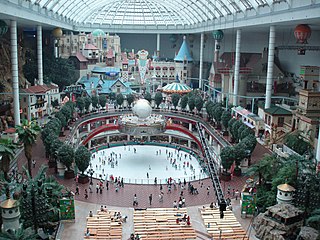
Lotte World or Lotte World Adventure is a major recreation complex in Seoul, South Korea. It consists of a large indoor theme park, an outdoor amusement park called "Magic Island", an artificial island on a lake linked by monorail, shopping malls, a luxury hotel, an observation tower, a Korean folk museum, sports facilities, and movie theaters. Opened in July 1989, Lotte World receives approximately 7.3 million visitors each year. Lotte World's sister theme park, Lotte World Adventure Busan, opened in March 2022.
The Cathedral Church of Our Lady of the Immaculate Conception, informally known as Myeongdong Cathedral (명동대성당), is the national cathedral of the Archdiocese of Seoul. Located in the Myeongdong neighbourhood of Jung District, Seoul, South Korea, it is the seat of the Archbishop of Seoul, Peter Chung Soon-taick.
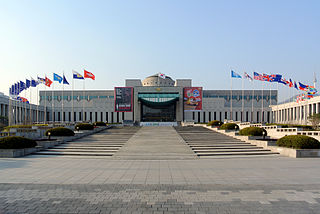
The War Memorial of Korea (Korean: 전쟁기념관) is a museum located in Yongsan-dong, Yongsan-gu, Seoul, South Korea. It opened in 1994 on the former site of the army headquarters to exhibit and memorialize the military history of Korea. It was built for the purpose of preventing war through lessons from the Korean War and for the hoped for peaceful reunification of North and South Korea. The memorial building has six indoor exhibition rooms and an outdoor exhibition centre displaying war memorabilia and military equipment from China, South Korea and the United States.
Bukchon Hanok Village (Korean: 북촌한옥마을) is a residential neighborhood in Jongno District, Seoul, South Korea. It has many restored traditional Korean houses, called hanok. This has made it a popular tourist destination, which has caused some friction with the residents who live there.
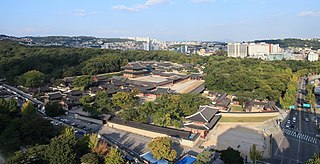
Changdeokgung, also known as Changdeokgung Palace or Changdeok Palace, is set within a large park in Jongno District, Seoul, South Korea. It is one of the "Five Grand Palaces" built by the kings of the Joseon dynasty (1392–1897). As it is located east of Gyeongbok Palace, Changdeokgung—along with Changgyeonggung—is also referred to as the "East Palace".
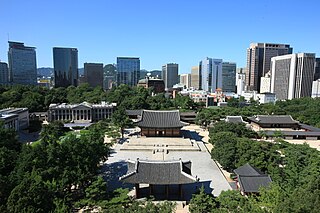
Deoksugung (Korean: 덕수궁) also known as Gyeongun-gung, Deoksugung Palace, or Deoksu Palace, is a walled compound of palaces in Seoul that was inhabited by members of Korea's royal family during the Joseon monarchy until the annexation of Korea by Japan in 1910. It is one of the "Five Grand Palaces" built by the kings of the Joseon dynasty and designated as a Historic Site. The buildings are of varying styles, including some of natural cryptomeria wood), painted wood, and stucco. Some buildings were built of stone to replicate western palatial structures.
Jogyesa is the chief temple of the Jogye Order of Korean Buddhism. The building dates back to the late 14th century and became the order's chief temple in 1936. It thus plays a leading role in the current state of Seon Buddhism in South Korea. The temple was first established in 1395, at the dawn of the Joseon Dynasty; the modern temple was founded in 1910 and initially called "Gakhwangsa". The name was changed to "Taegosa" during the period of Japanese rule, and then to the present name in 1954.
8. M4A3E8 Sherman Tank (U.S.A.)
The M4 Sherman, officially medium tank, M4, was the medium tank most widely used by the United States and Western Allies in World War II. The M4 Sherman proved to be reliable, relatively cheap to produce, and available in great numbers. It was also the basis of several other armored fighting vehicles including self-propelled artillery, tank destroyers, and armored recovery vehicles. Tens of thousands were distributed through the Lend-Lease program to the British Commonwealth, Soviet Union, and other Allied Nations. The tank was named by the British after the American Civil War General William Tecumseh Sherman.
9. M113A1 Armored Personnel Carrier (U.S.A.)
The M113 is a fully tracked armored personnel carrier (APC) that was developed and produced by the FMC Corporation. The M113 was sent to United States Army Europe in 1961 to replace the mechanized infantry's M59 APCs. The M113 was first used in combat in April 1962 after the United States provided the South Vietnamese army (ARVN) with heavy weaponry such as the M113, under the Military Assistance Command, Vietnam (MACV) program. Eventually, the M113 was the most widely used armored vehicle of the U.S. Army in the Vietnam War and was used to break through heavy thickets in the midst of the jungle to attack and overrun enemy positions. It was largely known as an "APC" or an "ACAV" by the allied forces.
10. M48A2C 'Patton' Tank (U.S.A.)
The M48 Patton is an American first-generation main battle tank (MBT) introduced in February 1952, being designated as the 90mm Gun Tank: M48. It was designed as a replacement for the M26 Pershing, M4 Sherman, M46 and M47 Patton tanks, and was the main battle tank of the U.S. Army and U.S. Marine Corps in the Vietnam War. Nearly 12,000 M48s were built, mainly by Chrysler and American Locomotive Company, from 1952 to 1961. The M48 Patton was the first U.S. medium gun tank with a four-man crew, featuring a centerline driver's compartment and no bow machine gunner. As with nearly all new armored vehicles it had a wide variety of suspension systems, cupola styles, power packs, fenders and other details among individual tanks.
11. Statue of Kim Gu
Kim Ku, also known by his art name Paekpŏm, was a Korean politician. He was a leader of the Korean independence movement against the Empire of Japan, head of the Korean Provisional Government for multiple terms, and a Korean reunification activist after 1945. Kim is revered in South Korea, where he is widely considered one of the greatest figures in Korean history.
12. Gyeongbokgung (Palace)
Gyeongbokgung, also known as Gyeongbokgung Palace, was the main royal palace of the Joseon dynasty. Built in 1395, it is located in northern Seoul, South Korea. The largest of the Five Grand Palaces built by the Joseon dynasty, Gyeongbokgung served as the home of the royal family and the seat of government.
13. T59 Tank (China)
The Type 59 main battle tank is a Chinese-produced version of the Soviet T-54A tank, an early model of the ubiquitous T-54/55 series. The first vehicles were produced in 1958 and it was accepted into service in 1959, with serial production beginning in 1963. Over 9,500 of the tanks were produced by the time production ended in 1985 with approximately 5,500 serving with the Chinese armed forces. The tank formed the backbone of the Chinese People's Liberation Army armoured units until the early 2000s, with an estimated 5,000 of the later Type 59-I and Type 59-II variants in service in 2002.
14. M36 Tank (U.S.A.)
The M36 tank destroyer, formally 90 mm Gun Motor Carriage, M36, was an American tank destroyer used during World War II. The M36 combined the hull of the M10 tank destroyer, which used the M4 Sherman's reliable chassis and drivetrain combined with sloped armor, and a new turret mounting the 90 mm gun M3. Conceived in 1943, the M36 first served in combat in Europe in October 1944, where it partially replaced the M10 tank destroyer. It also saw use in the Korean War, where it was able to defeat any of the Soviet tanks used in that conflict. Some were supplied to South Korea as part of the Military Assistance Program and served for years, as did re-engined examples found in Yugoslavia, which operated into the 1990s. Two remained in service with the Republic of China Army at least until 2001.
15. Chosun Ilbo Gallery
The Chosun Ilbo, also known as The Chosun Daily, is a Korean-language newspaper of record for South Korea and among the oldest active newspapers in the country. With a daily circulation of more than 1,800,000, the Chosun Ilbo has been audited annually since the Audit Bureau of Circulations was established in 1993. Chosun Ilbo and its subsidiary company, Digital Chosun, operate the Chosun.com news website, which also publishes news in English, Chinese, and Japanese.
16. M47 'Patton' Tank (U.S.A.)
The M47 Patton was an American medium tank, a development of the M46 Patton mounting an updated turret, and was in turn further developed as the M48 Patton. It was the second American tank to be named after General George S. Patton, commander of the U.S. Third Army during World War II and one of the earliest American advocates of tanks in battle.
17. Armillary Sphere
An armillary sphere is a model of objects in the sky, consisting of a spherical framework of rings, centered on Earth or the Sun, that represent lines of celestial longitude and latitude and other astronomically important features, such as the ecliptic. As such, it differs from a celestial globe, which is a smooth sphere whose principal purpose is to map the constellations. It was invented separately, in ancient China possibly as early as the 4th century BC and ancient Greece during the 3rd century BC, with later uses in the Islamic world and Medieval Europe.
18. Cheong Wa Dae
Cheong Wa Dae, also known as the Blue House in English, is a public park that formerly served as the presidential residence and the diplomatic reception halls of South Korea from 1948 to 2022. It is located in the Jongno district of the South Korean capital Seoul.
19. Type 63 Amphibious Light Tank (China)
The Norinco Type 63 is a Chinese amphibious light tank. First fielded in 1963, it is in many ways similar to the earlier Soviet PT-76. However, contrary to the popular belief, it does have some essential differences from the PT-76 in the vehicle's waterjet propulsion system, etc. It is also known under its industrial designation, the WZ-211. Type 63 is being replaced by Type 63A.
20. M110 8 inch Self-Propelled Howitzer (U.S.A.)
The 8-inch (203 mm) M110 self-propelled howitzer is an American self-propelled artillery system consisting of an M115 203 mm howitzer installed on a purpose-built chassis. Before its retirement from US service, it was the largest available self-propelled howitzer in the United States Army's inventory; it continues in service with the armed forces of other countries, to which it was exported. Missions include general support, counter-battery fire, and suppression of enemy air defense systems.
21. SU-100 Tank Destroyer (U.S.S.R.)
The SU-100 is a Soviet tank destroyer armed with the D-10S 100 mm anti-tank gun in a casemate superstructure. It was used extensively during the last year of World War II and saw service for many years afterwards with the armies of Soviet allies around the world.
22. Cheonggyecheon Stream Park
Cheonggyecheon is a 10.9-kilometre-long (6.8 mi) stream and public space in downtown Seoul, South Korea. A natural stream sourced from the Suseongdong Valley in Inwangsan, it was historically maintained as part of Seoul's early sewerage until the mid-20th century, when post-Korean War rapid economic development and deteriorating conditions prompted the filling of the stream with concrete and the construction of an elevated freeway, the Cheonggye Expressway, in its place. In 2003, the city government began an urban renewal project to disassemble the expressway and restore the stream, which was completed in 2005 at a cost of over ₩386 billion.
23. Statue of Kim usin
Kim Yu-sin was a Korean military general and politician in 7th-century Silla. He led the unification of the Korean Peninsula by Silla under the reign of King Muyeol and King Munmu. He is said to have been the great-grandchild of King Guhae of Geumgwan Gaya, the last ruler of the Geumgwan Gaya state. This would have given him a very high position in the Silla bone rank system, which governed the political and military status that a person could attain.
24. M46 'Patton' Tank (U.S.A.)
The M46 Patton is an American medium tank designed to replace the M26 Pershing and M4 Sherman. It was one of the U.S Army's principal medium tanks of the early Cold War, with models in service from 1949 until the mid-1950s. It was not widely used by U.S. Cold War allies, being exported only to Belgium, and only in small numbers to train crews on the upcoming M47 Patton.
25. M107 157mm Self-Propelled Gun (U.S.A.)
The M107 175 mm (6.9 in) self-propelled gun was used by the U.S. Army and U.S. Marine Corps from the early 1960s to the late 1970s. It was part of a family of self-propelled artillery that included the M110. It was intended to provide long-range fire support in an air-transportable system. It was exported to several other countries including Germany, South Korea, Spain, Greece, Iran, Israel, Italy, the Netherlands, the United Kingdom, and Turkey. The M107's combat history in U.S. service was limited to the Vietnam War; it also saw extensive combat use in Israeli service. The M107 shared many components with, and in many cases was replaced by, later versions of the M110 203 mm (8.0 in) howitzer. Although withdrawn from U.S. service in the late 1970s, it continues to see military service as of 2024.
26. National Museum of Korea
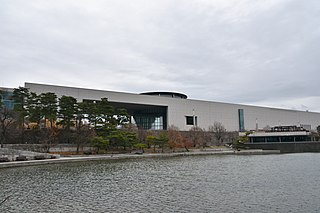
The National Museum of Korea (Korean: 국립중앙박물관) is the flagship museum of Korean history and art in South Korea. Since its establishment in 1945, the museum has been committed to various studies and research activities in the fields of archaeology, history, and art, continuously developing a variety of exhibitions and education programs.
27. Statue of Peace
The Statue of Peace, often shortened to Sonyeosang in Korean or Shōjo-zō in Japanese and sometimes called the Comfort Woman Statue , is a symbol of the victims of sexual slavery, known euphemistically as comfort women, by the Japanese military during World War II, specifically, the period from the beginning of the Second Sino-Japanese War until the end of the Pacific War. The Statue of Peace was first erected in Seoul to urge the Japanese government to apologize to and honour the victims. However, it has since become a site of representational battles among different parties.
28. Gwanghwamun Gate
Gwanghwamun is the main and largest gate of Gyeongbok Palace, in Jongno District, Seoul, South Korea. It is located at a three-way intersection at the northern end of Sejongno. As a landmark and symbol of Seoul's long history as the capital city during the Joseon period, the gate has gone through multiple periods of destruction and disrepair. The most recent large-scale restoration work on the gate was finished and it was opened to the public on August 15, 2010.
29. Namdaemun Market
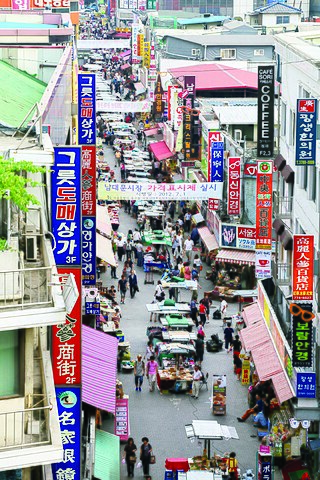
Namdaemun Market (Korean: 남대문시장) is a large traditional market in Seoul, South Korea. It is located next to Namdaemun, the main southern gate to the old city. The market is among the oldest extant markets in Korea, having opened during the Joseon period in 1414.
30. K200 Korean Infantry Fighting Vehicle (Korea)
The K200 KIFV is a South Korean armored personnel carrier, originally produced by Daewoo Heavy Industries as a domestic replacement for older armored personnel carriers, such as the M113, in front line service with the Republic of Korea Armed Forces at the time of the K200's development. Since 2009 the K200 has been supplemented by the K21. A total of 2,383 K200 vehicles of all configurations were produced between 1985 and 2006, among which are 111 K200A1 vehicles exported to Malaysia.
31. M56 Scorpion Self-Propelled Gun (U.S.A.)
The M56 "Scorpion" self-propelled gun is an American unarmored, airmobile self-propelled tank destroyer, which was armed with a 90mm M54 gun with a simple blast shield, and an unprotected crew compartment.
32. Samjeondo Monument
The Samjeondo Monument is a monument marking the submission of the Korean Joseon dynasty to the Manchu-led Qing dynasty in 1636 after the latter's invasion of the former. Its original name was Daecheong Hwangje Gongdeok Bi (大淸皇帝功德碑), which means the stele to the merits and virtues of the Emperor of the Great Qing. Initially erected at Samjeondo, near the Sambatnaru crossing point of the Han River in modern-day Seoul, it was thereafter buried and erected again several times. It is designated as the 101st historic site of South Korea.
33. Sundial(Angbu Ilgu)
The Anbu Ilgu (仰釜日晷) is a sundial that has been produced and used since the 16th year of King Sejong the Great of Joseon in 1434, and was designated as Treasure No. 845 of the Republic of Korea on August 9, 1985 in recognition of its scientific, historical, and artistic value. Jang Young-sil, Icheon, and Kim Jo participated in the early production of the Anbuilgu, and since there are no surviving Anbuilgu made at this time, the 18th-century Anbuilgu was designated as a treasure. Designated as a treasure, the portable anbuilgu was made by Kang-gun and is small enough to fit in a pocket. In addition, there are Jang Young-sil's inventions, such as the Pavilion Tower, the Honcheonui, the Sundial, the Water Clock, and the Celestial Train Field Map.
34. Statue of Lee Bong-chang Righteous Person in Hyochang Park
Lee Bong-chang was a Korean independence activist. In Korea, he is remembered as a martyr due to his participation in the 1932 Sakuradamon incident, in which he attempted to assassinate the Japanese Emperor Hirohito with a grenade.
35. Hwangudan
Hwangudan (Korean: 환구단) was a shrine complex that still partially stands in Jung District, Seoul, South Korea. The complex consisted of two main buildings: a coronation site and Hwanggungu. The coronation site was built in late 1897 and destroyed in 1913. Hwanggungu was built in 1899 and still stands today.
36. Seolleung / Royal Tomb of Queen Jeonghyeon
Queen Jeonghyeon, of the Papyeong Yun clan, was a posthumous name bestowed to the wife and third queen consort of Yi Hyeol, King Seongjong and the mother of Yi Yeok, King Jungjong. She was queen consort of Joseon from 1479 until her husband's death in 1495, after she was then honoured as Queen Dowager Jasun (자순왕대비) during the reigns of her adoptive son, King Yeonsan from 1495 to 1506, and her son, King Jungjong from 1506 to 1530.
37. Museum Kimchikan
Museum Kimchikan, formerly Kimchi Field Museum, is a food museum in Insa-dong, Jongno District, Seoul, South Korea. It originally opened in 1986 as the first such museum in Korea, and has since moved locations twice. It focuses on kimchi: one of the staples of Korean cuisine.
38. Cheugugi(Rain Gauge)
Cheugugi is the first well-known rain gauge invented and used during the Joseon dynasty of Korea. It was invented and supplied to each provincial offices during the King Sejong the Great's reign. As of 2010, only one example of the Cheugugi remains, known as the Geumyeong Cheugugi, which literally means "Cheugugi installed on the provincial office's yard." It is designated as National Treasures #561 of Korea and was installed in provincial office of Gongju city, 1837 by King Yeongjo, the 21st king of Joseon. In addition, the official record of the rainfall by Cheugugi from King Jeongjo's reign to Emperor Gojong's reign is preserved.
39. Sejong Grand Theater
Sejong Center for the Performing Arts (Korean: 세종문화회관) is the largest arts and cultural complex in Seoul, South Korea. It has an interior area of 53,202m². It is situated in the center of the capital, on Sejongno, a main road that cuts through the capital city of the Joseon Dynasty. The center took 4 years to complete, opening in 1978. It was "built as a cultural center for Seoulites". It currently contains one of the biggest pipe organs in Asia.
40. Bongeunsa Temple
Bongeunsa is a Korean Buddhist temple located in Samseong-dong, Gangnam District, Seoul, South Korea. It was founded in 794 during the reign of King Wonseong by State Preceptor Yeonhoe, then the highest ranking monk of Silla. The temple was originally named Gyeonseongsa. It is located on the slope of Sudo Mountain, across the street from the COEX Mall.
41. Nanji Hangang Park
World Cup Park (Korean: 월드컵공원) is an ecological park built in Sangamdong-gil, in Seoul, South Korea. The park was established on May 1, 2002 in anticipation of the 2002 Korea-Japan World Cup Games.
42. Statue of Lee siyung
Yi Si-yeong was a Korean politician, independence activist, educator and neo-Confucianist scholar. He was the first vice president of South Korea from 1948 to 1951. Yi resigned after the National Defense Corps incident of 1951. His art names were Seongjae or Sirimsanin. Before the Japan–Korea Treaty of 1910, he had served for Joseon as the Governor of South Pyongan Province and the President of Hansung Law Court.
43. Seoul Millennium Time Capsule
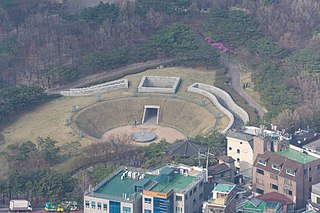
The Seoul 1000 Years Time Capsule was built in 1994 to commemorate the 600th anniversary of the Seoul Metropolitan Government, and was buried on November 29, 1994. It is made of a special material with a height of 1.7 meters and a diameter of 1.3 meters, and it is made to imitate the shape of various Boshin. It contains 600 items and was opened on November 29, 2394. It is located in Namsangol Hanok Village in the area of 28, Toegye-ro 34-gil, Jung-gu, Seoul, and reproductions are on display at the Seoul Museum of History.
44. Amsa-dong Prehistoric Settlement Site
The Seoul Amsa-dong Site (Seoul 岩寺洞 遺蹟) is a Neolithic residential site located in Amsa 2-dong, Gangdong-gu, Seoul. It is the 267th Historic Site of the Republic of Korea. This prehistoric site is located in a 78,793m2 prehistoric park with facilities such as the first museum surrounding the restored pit and the pit site, and the second museum for multimedia and experiential learning.
45. Unhyeongung (Palace)
.jpg)
Unhyeongung (Korean: 운현궁), also known as Unhyeongung Royal Residence, is a former Korean royal residence located at 114-10 Unni-dong, Jongno-gu, Seoul, Korea. It was formerly the residence of the Heungseon Daewongun a prince regent of Korea during the Joseon period in the 19th century, and father of Emperor Gojong. Gojong himself also lived in this residence until age 12 when he assumed the throne. It is currently a museum and is open to the public free of charge.
46. National Museum of Modern and Contemporary Art
The National Museum of Contemporary Art, Korea (MMCA) is a contemporary art museum with four branches in Gwacheon, Deoksugung, Seoul and Cheongju. The museum was first established in 1969 as the only national art museum in the country accommodating modern and contemporary art of Korea and international art of different time periods.
Wikipedia: National Museum of Modern and Contemporary Art (EN), Website
47. Jungmyeongjeon Hall
The Jungmyeongjeon Hall (重明殿) is a Western-style hall attached to Deoksugung Palace. Its original name was Suokheon (漱玉軒), but after the fire of Gyeongwoon Palace (now Deoksugung) in 1904, Gojong moved to this place and changed its name to Jungmyeongjeon. On November 17, 1905, the Treaty of Friendship was signed at the Jungmyeong Pavilion.
48. Songpa Naru Park
Seokchon Lake Park (Korean: 석촌호수공원) in Songpa District, Seoul, South Korea includes Seokchon Lake and Lotte World's Magic Island. The lake's area is 217,850 m2 (2,344,900 sq ft) and its average depth is about 4.5 meters (15 ft).
49. Namsangol Hanok Village
Namsangol Hanok Village (Korean: 남산골한옥마을) is a recreated village of historical Korean buildings in Pil-dong, Jung District, Seoul, South Korea. The village contains several Korean traditional houses called hanok.
50. Postal Administration
The General Post Office (郵政總局) was a government office in charge of postal services in the late Joseon Dynasty and can be said to be the first post office in the history of Korea. The building is designated as Historic Site No. 213.
51. Salgoji Bridge
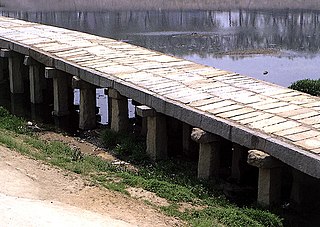
It was a bridge built on the main transportation route between Hanseongbu, the capital of Joseon, and the southeastern part of the Korean Peninsula, and was the main passage connecting the provinces of Gangneung and Chungju. It is also known as Jeonge Bridge. It is the longest surviving stone bridge of the Joseon Dynasty. The construction of the bridge began in 1420 (the 2nd year of Sejong) and was completed in 1483 (the 14th year of Seongjong).
52. Bosingak Bell Pavilion
The old Bosingak Dongjong (舊普信閣 銅鍾, English: Bosin-gak) was a bell made during the Joseon Dynasty and was used to ring the New Year's Eve bell at Bosingak in Jongno, Seoul until 1985. On January 21, 1963, it was designated as the second treasure of the Republic of Korea.
53. Choi Sunu House
Choi Soon-woo's Old House (崔淳雨 古宅) is a hanok where Hyegok Choi Soon-woo (1916~1984), a former director of the National Museum of Korea and a historian of archaeology of oriental art, lived from 1976 to 1984. Choi Soon-woo, who is famous as the author of 《Leaning on the Pillar of Pear Shedding of Muryang Faucet》 and 《I Am Mine Is Beautiful》 and had an excellent eye for Korean beauty, said that he tried to put his own idea of Korean beauty in this house.
54. Palgakjeong Pavilion
Tapgol Park Octagonal Pavilion (塔gol公園 八角亭) is a pavilion built along with Tapgol Park built by Brown in England. On September 11, 1989, it was designated as Tangible Cultural Property No. 73 by the Seoul Metropolitan Government
55. Kim Koo Museum & Library
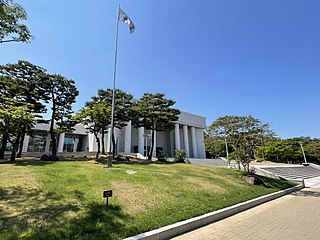
The Kim Koo Museum is a museum in located within Hyochang Park, Hyochang-dong, Yongsan District, Seoul, South Korea. It commemorates the life and work of Kim Ku, a Korean independence activist during the Japanese occupation of Korea. It opened on October 22, 2002. It also contains a library.
56. Hongjimun Gate and Tanchungdaesong Fortress
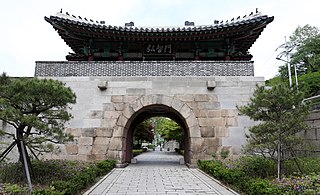
The Hongmun Gate and Tangchundaeseong (弘智門 and 蕩春臺城) were built to connect Hanyangyang Castle and Bukhansanseong Fortress. On June 23, 1976, it was designated as Tangible Cultural Property No. 33 of the Seoul Metropolitan Government.
57. Bukchon Art Museum
Bukchon Art Museum (Korean: 북촌미술관) is an art museum in Seoul, South Korea. It has 150 pieces of Korean modern art, 200 pieces of Chinese art, 2500 of old documents of Joseon dynasty in total of 2850.
58. Namgyewon Seven-story Pagoda
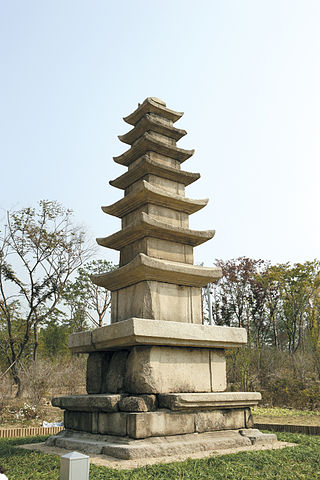
The seven-storied stone pagoda (開城 南溪院址 七層石塔) is a seven-storied stone pagoda built in the Goryeo period. On December 20, 1962, it was designated as National Treasure No. 100 of the Republic of Korea. Originally located in Kaesong, it was moved to Gyeongbokgung Palace in 1915 and then to the National Museum of Korea in Yongsan in 2005.
59. Heonilleung
Heonilleung is a burial ground from the Joseon dynasty, located in Seocho District, Seoul. This is where King Taejong and King Sunjo are entombed, along with their wives, Queen Wongyeong and Queen Sunwon.
60. Baek In-Je's House In Gahoe-dong
The Baekinje House (嘉會洞 白麟濟 家屋) is a house during the Japanese colonial period in Bukchon-ro 7-gil, Jongno-gu, Seoul. On March 17, 1977, it was designated as the 22nd Folk Cultural Property of the Seoul Metropolitan Government. When it was registered as a folklore in 1977, it was owned by Baek In-je, the founder of Baek Hospital, so it was named Baekin-je House.
61. Hongje-dong Five-Story Pagoda
The five-storied stone pagoda in Hongje-dong, Seoul (-- 弘濟洞 五層石塔) is a stone pagoda from the Goryeo period in the National Museum of Korea. On January 21, 1963, it was designated as Treasure No. 166 of the Republic of Korea.
62. Ihwajang
Ihwajang is a historic home in Jongno District, Seoul, South Korea. It is the former residence of the first President of South Korea, Syngman Rhee. It was designated a historic site of South Korea on April 28, 2009. It is open to visitors as a memorial hall to Rhee.
63. Seoul Baekje Museum
Seoul Baekje Museum (Korean: 한성백제박물관) is a museum in South Korea. Based on the natural silhouette of the nearby Mongchontoseong, the appearance of Seoul Baekje Museum was shaped a ship of Baekje. Seoul Baekje Museum is a civic lifelong education center with an emphasis on the educational role. There are a variety of Baekje artifacts and vividly embodied materials on ancient history of the Korean peninsula.
64. Korea House
Korea House (韓國之家, Korea House) is a traditional culture experience space and restaurant located in Jung-gu, Seoul, and is operated year-round by the Korea Cultural Heritage Foundation. Originally, the Korean house was located in the former residence of Pak P'ang-nyeon, a scholar of the Joseon Dynasty, and was built in 1980 by Shin Eung-su, a major cultural property of Korea, and officially opened in 1981.
65. Stupas of Master Boje
The Boje Venerable Pagoda (原州 令傳寺址 普濟尊者塔) is a pagoda that enshrines the relics of the late Goryeo Buddhist monk Boje Venerable. Unlike ordinary monks' stupas, it takes the form of a stone pagoda and has two pagodas of the same style. Coming out of the pagoda was a reliquary, and there was a stone of the Venerable Boje. As a result, it was confirmed that this pagoda was built in the 14th year of King Woo of Goryeo (1388). On January 21, 1963, it was designated as Treasure No. 358 of the Republic of Korea.
66. Yi Jungu's House in Gahoe-dong
The Lee Joon-gu House (嘉會洞 李俊九 家屋) is a building during the Japanese colonial period located at Bukchon-ro 11-ga, Jongno-gu, Seoul. On May 28, 1991, it was designated as the second cultural property of the Seoul Metropolitan Government.
67. 둔지산
Dunjisan (屯之山) is a mountain that straddles Itaewon-dong and Yongsan-dong, Yongsan-gu, Seoul, South Korea. It is currently located within the Yongsan base. The height of the summit is about 65 meters, and the height of the rest of the hills is about 48 meters.
68. 사명대사 동상
Seongdaesa (泗溟大師, October 17, 1544 ~ August 26, 1610 in the lunar calendar) was a high priest and monk of the mid-Joseon Dynasty. His attribute is Lim (任), his common name is Ngyu (應奎), his son is Yi Huan (離幻), his name is Song Yun (松雲), his dang name is Mission Hall (泗溟堂), his star name is Zhong Feng (鍾峯), his main building is Feng Cheon, and his name is Jiathong Emperor (慈通弘濟尊者). He is more famous by his party name, Mission Hall (泗溟堂) than by his legal name, Yu Jung (惟政), and is called Mission Master (泗溟大師) out of respect.
69. Galhangsa Three-story Stone Pagoda
The Gimcheon Galhangsa Temple East-West Three-storied Stone Pagoda (金泉 葛項寺址 東·西 三層石塔) is a stone pagoda built in Silla during the Northern and Southern Kingdoms period. It was designated as National Treasure No. 99 of the Republic of Korea on December 20, 1962.
70. Site of Mangwonjeong
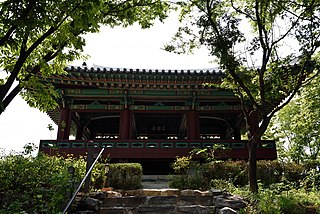
The site of Mangwonjeong (望遠亭址) is a pavilion of the Joseon Dynasty located in Hapjeong-dong, Mapo-gu, Seoul. On June 18, 1990, it was designated as Monument No. 9 by the Seoul Metropolitan Government.
71. K-1 Tank (Korea)
The K1, also known as Type 88 by American engineers, is a South Korean main battle tank designed by Chrysler Defense and Hyundai Precision Industry for the Republic of Korea Armed Forces. The vehicle's design was based on technology from Chrysler's M1 Abrams, tailored to meet the ROK's unique requirements. The K1A1 is an up-gunned variant with a 120 mm 44 caliber smoothbore gun, and outfitted with more modern electronics, ballistic computers, fire control systems, and armor. Hyundai Rotem produced 1,511 K1 and K1A1 tanks between 1986 and 2011.
72. Bukchon Hanok Village Information Center
Bukchon Hanok Village is a hanok village located in Gahoe-dong and Samcheong-dong, Jongno-gu, Seoul. Geographically, it is located between Gyeongbokgung Palace, Changdeokgung Palace, and Jongmyo Palace. Located between the two palaces of the Joseon Dynasty, this area has long been called 'Bukchon', meaning the upper town of Cheonggyecheon and Jongno, and corresponds to the current Gahoe-dong, Samcheong-dong, Wonseo-dong, Jae-dong, and Gye-dong areas. There are many historical sites, cultural assets, and folk materials, so it is sometimes called a museum in the city. There are many galleries lined up around Samcheong-dong-gil, which faces Gyeongbokgung Palace, and you can find various foods and unique cafes in places such as Hwadong-gil. In addition, traditional craftsmen and artists live in Wonseo-dong.
73. The Korea Peace Bell
The North American Aviation T-28 Trojan is a radial-engine military trainer aircraft manufactured by North American Aviation and used by the United States Air Force and United States Navy beginning in the 1950s. Besides its use as a trainer, the T-28 was successfully employed as a counter-insurgency aircraft, primarily during the Vietnam War. It has continued in civilian use as an aerobatics and warbird performer.
74. KM900 Light Armored Vehicle (Korea)
.jpg)
The Fiat CM6614 is a 4x4 wheeled armoured personnel carrier developed as a joint venture between Fiat and Oto Melara of Italy. The hull is welded steel, and the vehicle is amphibious. The first prototype was built in 1972.
75. Site of the Heroic Deed of the Martyr Yi Jaemyeong
Lee Jae-myung (李在明, October 16, 1887 ~ September 30, 1910) was an independence activist during the Korean Empire. He tried to get rid of Lee Wan-yong at the age of 20, but after failing, he was arrested and sentenced to death. His name is Lee Su-gil (李秀吉), and he is a Protestant. The main building is Jinan (鎭安).
76. 호암산성

Seoul Hoam Fortress (Seoul 虎巖山城) is a fortress located in Siheung-dong, Geumcheon-gu, Seoul. On February 26, 1991, it was designated as the Historic Site No. 343 of the Republic of Korea and the surrounding fortress site, and on July 28, 2011, it was renamed as Hoam Fortress in Seoul.
Share
How likely are you to recommend us?
Disclaimer Please be aware of your surroundings and do not enter private property. We are not liable for any damages that occur during the tours.
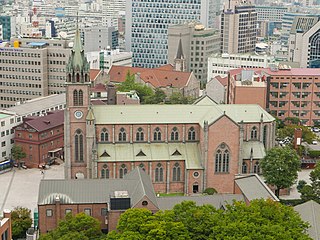
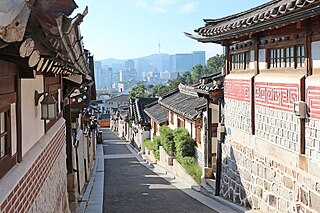
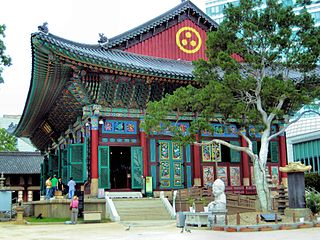
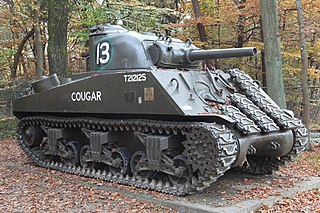
.jpg)
.jpg)
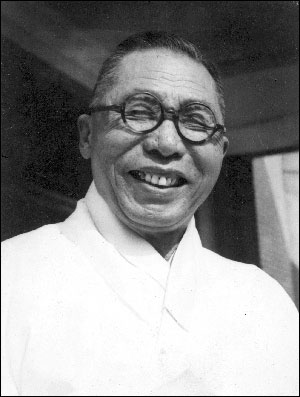
.jpg)
.jpg)
.jpg)
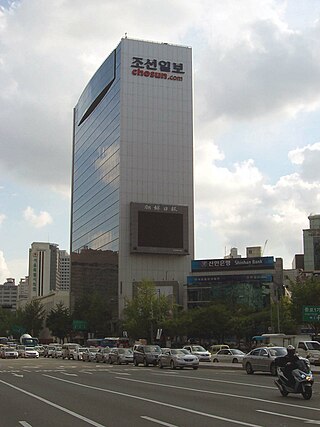
.jpg)
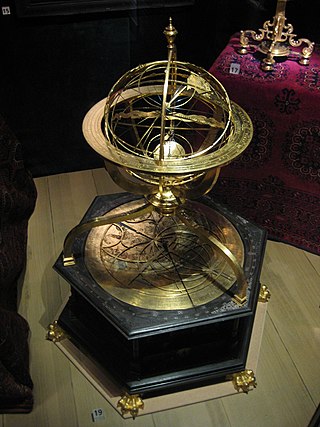
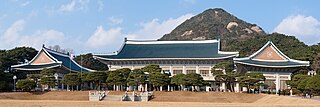
.jpg)
.jpg)
.jpg)
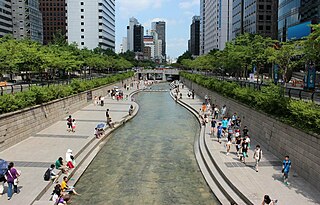
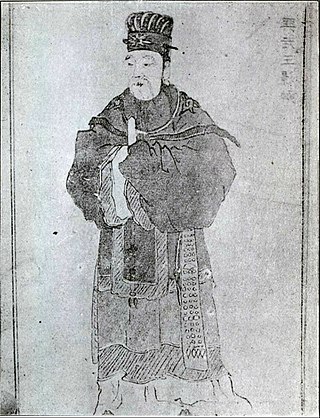
.jpeg)
.jpg)
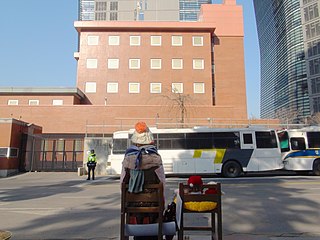
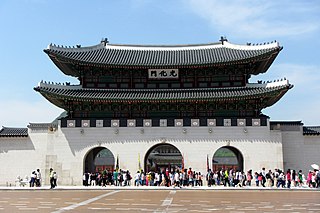
.jpg)

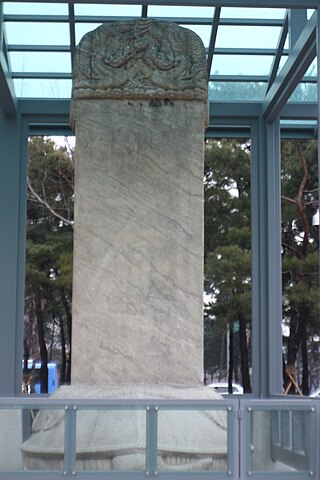
.jpg)
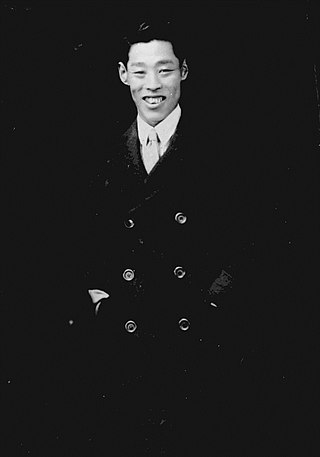
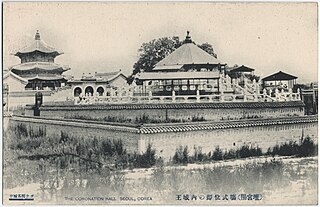
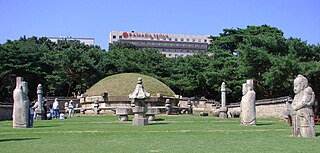
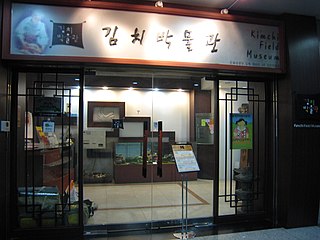
.jpg)
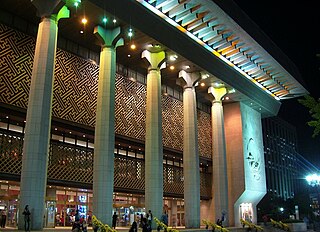
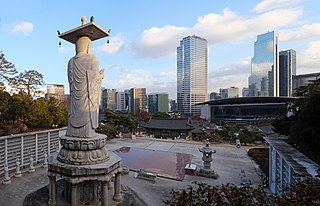
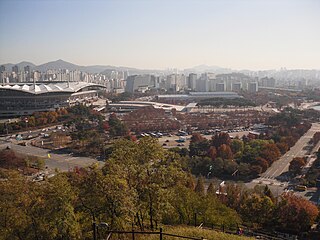
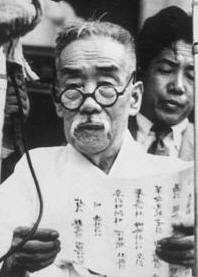
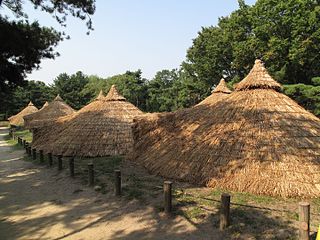
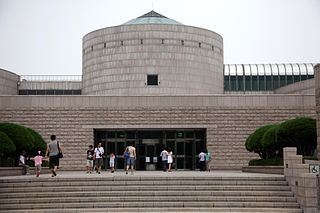
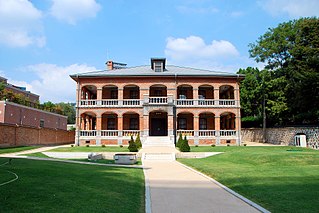
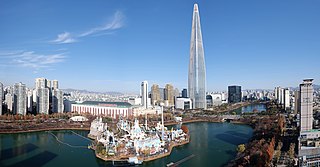
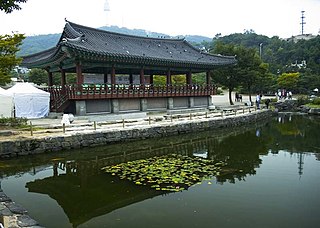
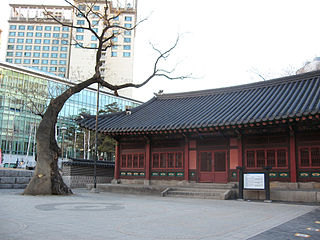
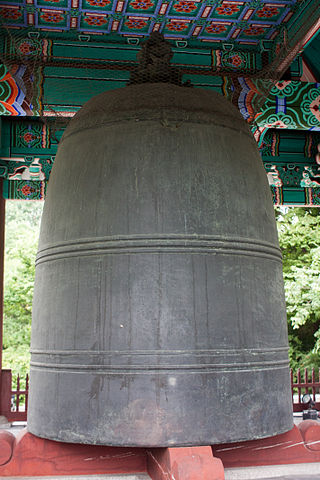
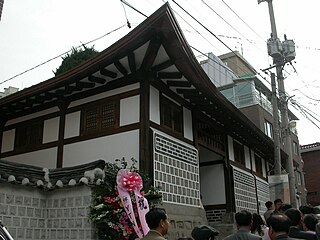
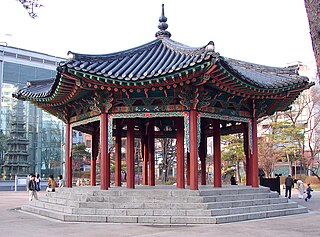
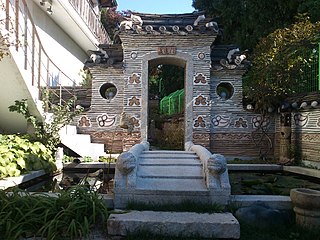
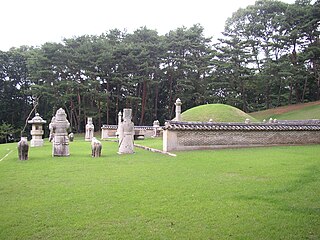
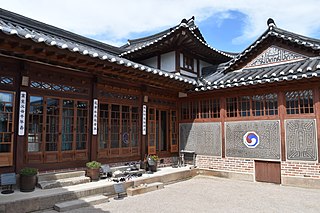
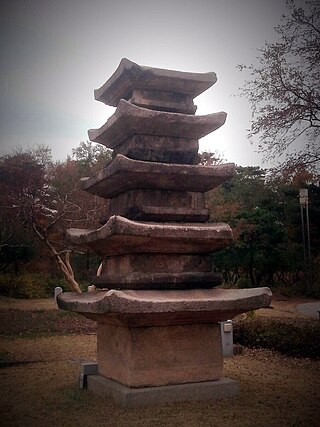
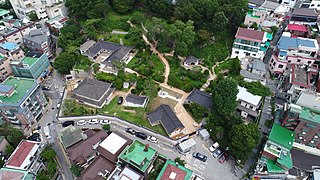

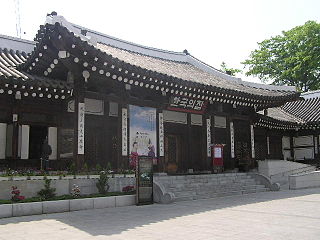
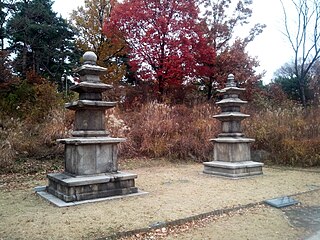



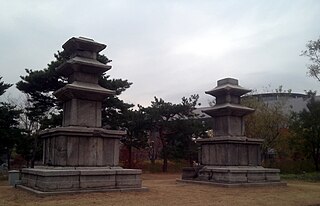
.jpg)
